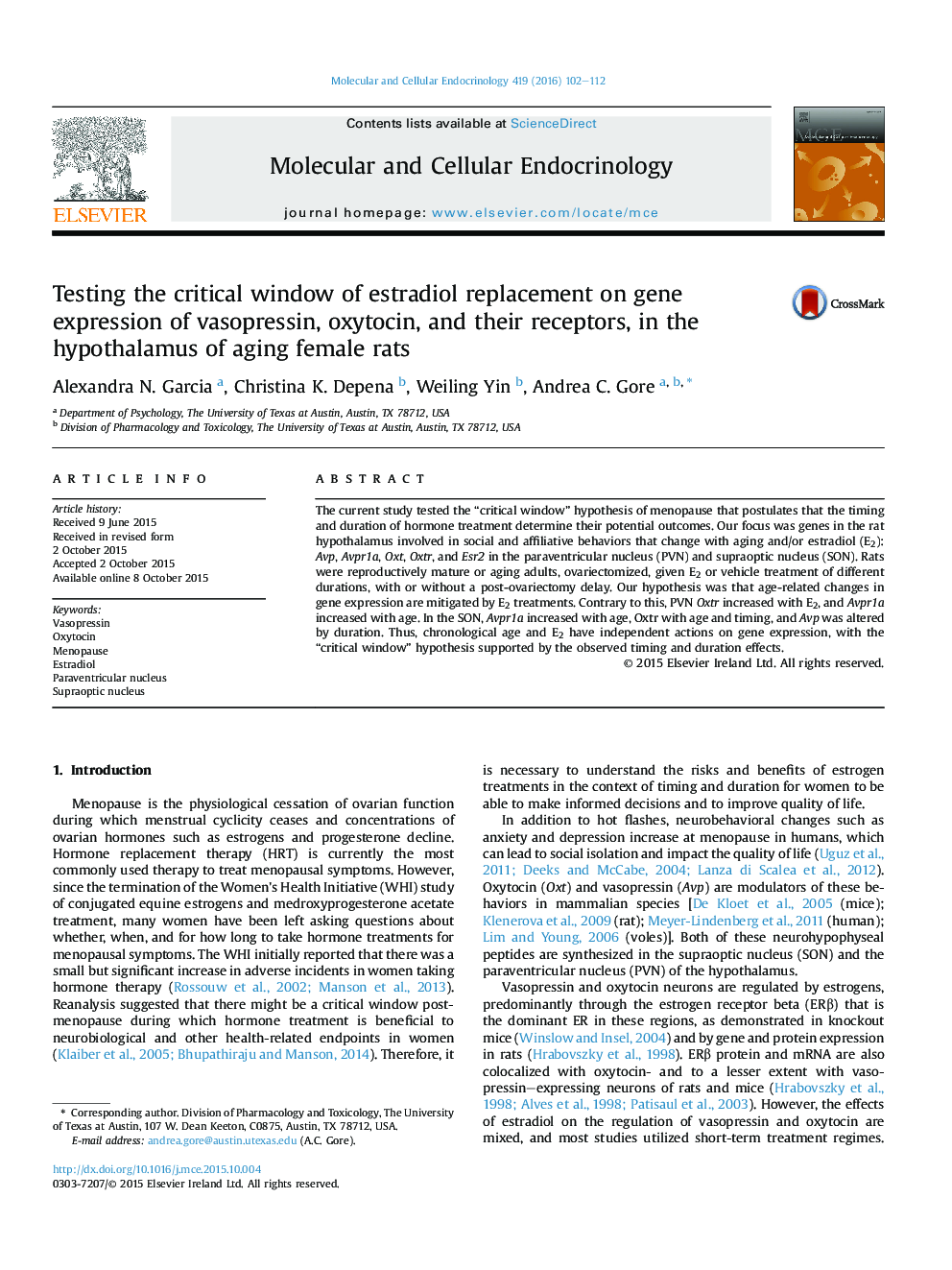| Article ID | Journal | Published Year | Pages | File Type |
|---|---|---|---|---|
| 2195717 | Molecular and Cellular Endocrinology | 2016 | 11 Pages |
•Vasopressin receptor gene expression increased with age in PVN and SON.•Oxytocin receptor gene expression increased with shorter-term E2 in the PVN.•In SON, oxytocin receptor gene had complex age and hormone regulation.•The oxytocin gene was unaffected by age or estradiol in PVN and SON.•The vasopressin gene had complex timing/duration effects of E2 in the SON.
The current study tested the “critical window” hypothesis of menopause that postulates that the timing and duration of hormone treatment determine their potential outcomes. Our focus was genes in the rat hypothalamus involved in social and affiliative behaviors that change with aging and/or estradiol (E2): Avp, Avpr1a, Oxt, Oxtr, and Esr2 in the paraventricular nucleus (PVN) and supraoptic nucleus (SON). Rats were reproductively mature or aging adults, ovariectomized, given E2 or vehicle treatment of different durations, with or without a post-ovariectomy delay. Our hypothesis was that age-related changes in gene expression are mitigated by E2 treatments. Contrary to this, PVN Oxtr increased with E2, and Avpr1a increased with age. In the SON, Avpr1a increased with age, Oxtr with age and timing, and Avp was altered by duration. Thus, chronological age and E2 have independent actions on gene expression, with the “critical window” hypothesis supported by the observed timing and duration effects.
